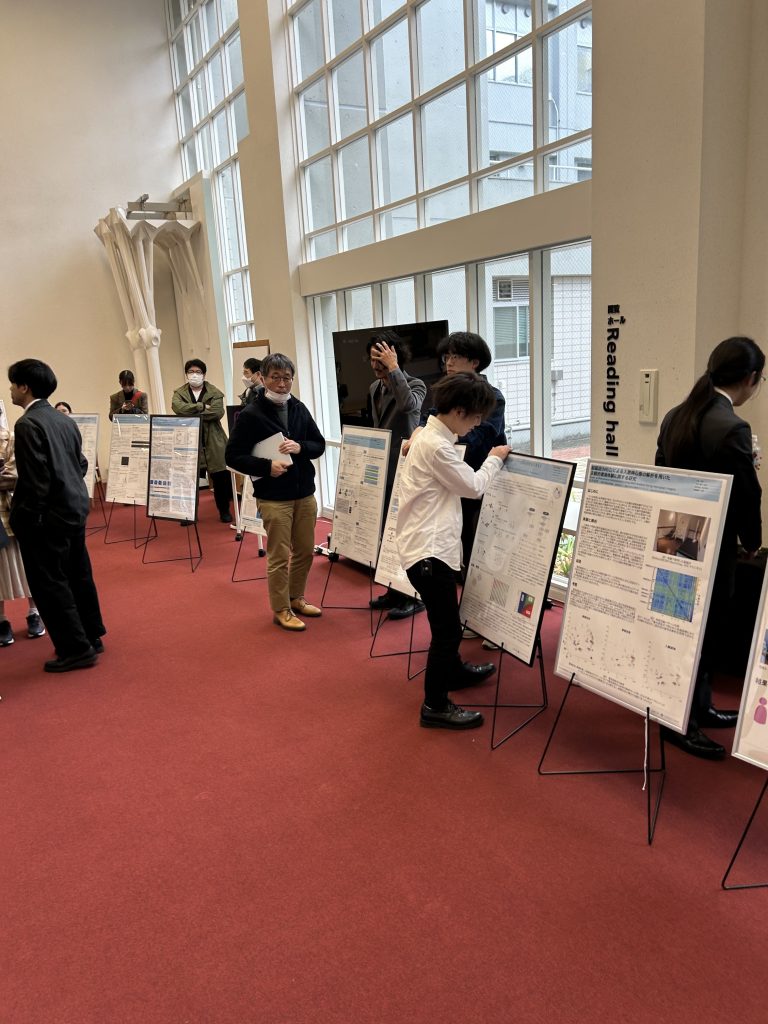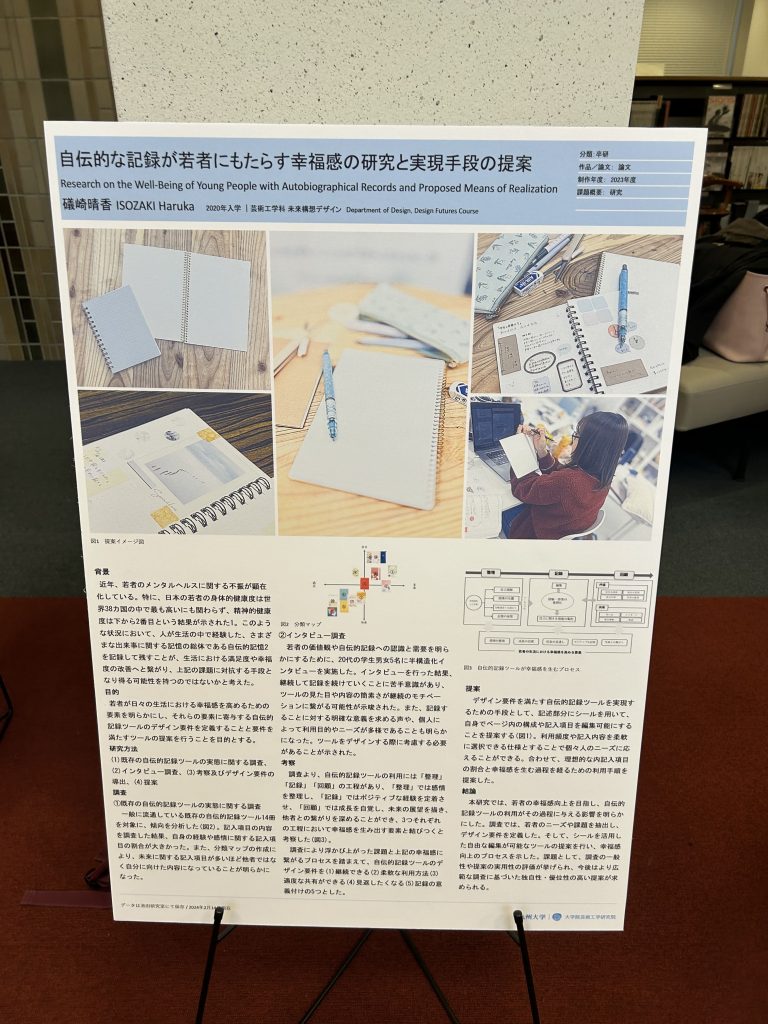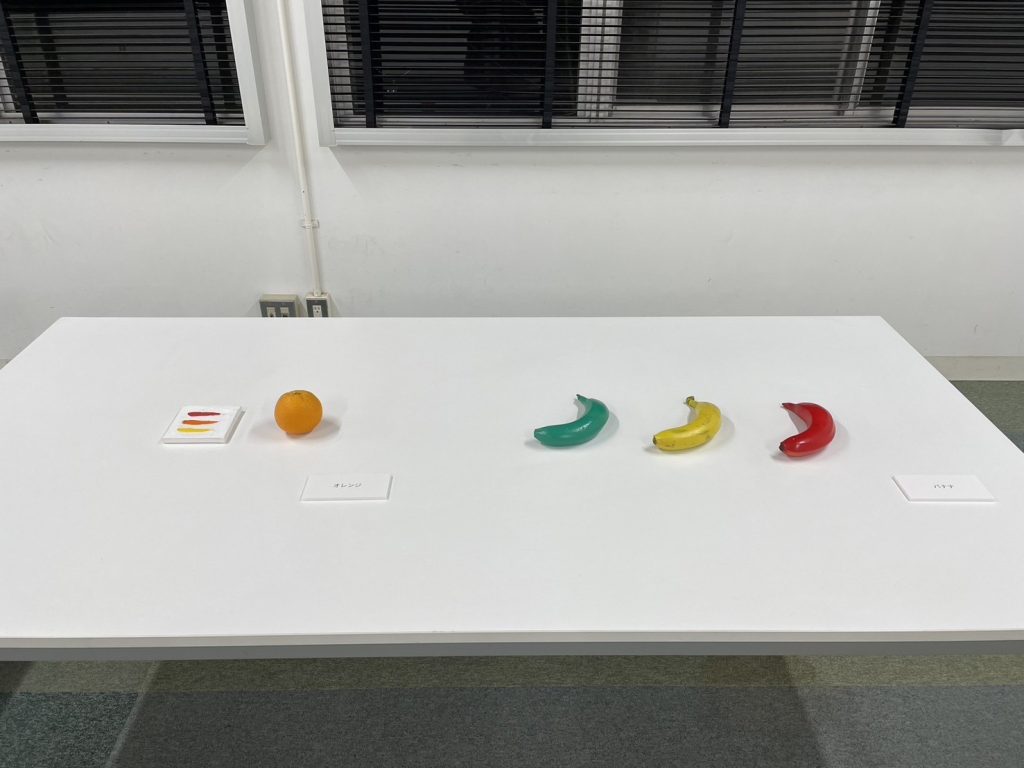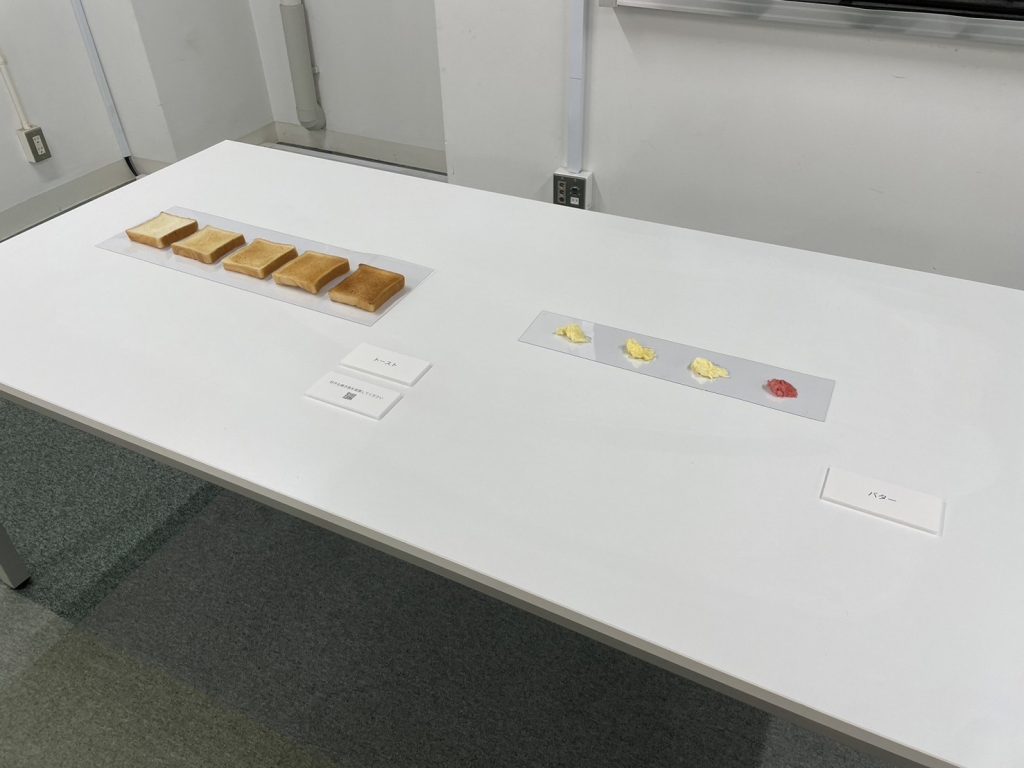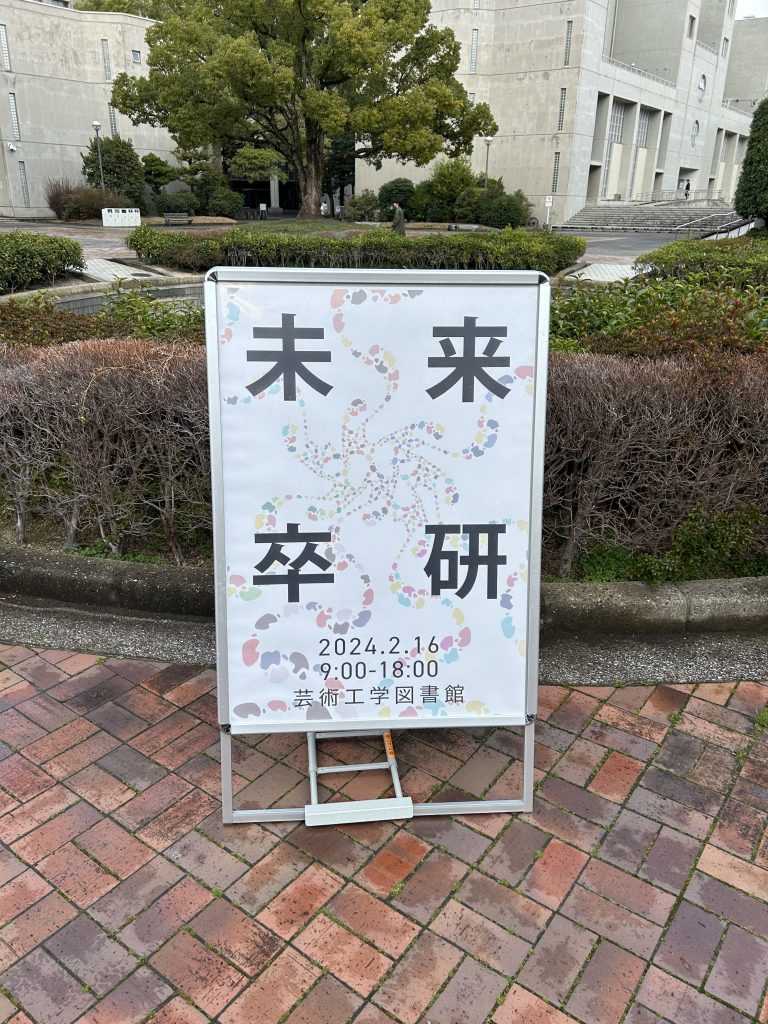
The Design Futures course, School of Design started in 2020 to cultivate the ability to design unprecedented events, services, and social systems while envisioning a desirable future. In light of the current trend where the object of design is expanding from objects to systems and services, this course aims to train high-level designers.
This year sees the graduation of the first batch of students. This article describes the graduation exhibition held on February 17, to showcase the results of research undertaken by the Year 4 students in their final year.
The studies in this course can be broadly classified into Social Futures, Art and Design, and Biology and Information Science. In Social Futures, there are students whose studies dealt with social problems and offered solutions or proposed design requirements. In Art and Design, students worked on creative works and held solo exhibitions. In Biology and Information Science, students researched issues that required mathematical models to show rules and correlations from simulations. Of course, there were also many studies that dealt with multiple fields, such as those that combined mathematical models with social issues.
The following are some examples of the student’s research.
In a study of the well-being of autobiographical records, it was revealed that there are three processes in the use of autobiographical recording tools: organizing, recording, and retrospect. Each of the three processes brings a sense of well-being to people, but there were also challenges that young people were not good at continuing to keep records. A recording tool using stickers was proposed to help them continue for a long time. (picture1)
The design study of food color was aimed at considering the factors determining food color. For example, bananas were once found in red and yellow, but only yellow bananas are extant.
Various factors behind the color selection could be market, producer and consumer. To question the differences and relationships between the colors of nature’s original foods, a solo exhibition was held. This study gave people an opportunity to think deeply about the background of the colors of the foods they usually purchase. (picture2)
Although the fields covered in this course’s graduation research varied from person to person, the common elements of all research were to ask questions about the present, to clarify the essence of things, and to propose systems and services that should exist. This is an important skill for future designers.
About the writer
Hello. My name is Hiromu Sato, a fourth-year student in the Design Futures Course. Most of the students in my laboratory are international students, and we communicate in English every day. This is the reason why I challenged myself to travel abroad. I travelled to Korea, Singapore, Thailand, Vietnam, etc. and experienced different cultures. I would like to continue to make friends with people from various countries. Thanks.
This year sees the graduation of the first batch of students. This article describes the graduation exhibition held on February 17, to showcase the results of research undertaken by the Year 4 students in their final year.
The studies in this course can be broadly classified into Social Futures, Art and Design, and Biology and Information Science. In Social Futures, there are students whose studies dealt with social problems and offered solutions or proposed design requirements. In Art and Design, students worked on creative works and held solo exhibitions. In Biology and Information Science, students researched issues that required mathematical models to show rules and correlations from simulations. Of course, there were also many studies that dealt with multiple fields, such as those that combined mathematical models with social issues.
The following are some examples of the student’s research.
In a study of the well-being of autobiographical records, it was revealed that there are three processes in the use of autobiographical recording tools: organizing, recording, and retrospect. Each of the three processes brings a sense of well-being to people, but there were also challenges that young people were not good at continuing to keep records. A recording tool using stickers was proposed to help them continue for a long time. (picture1)
The design study of food color was aimed at considering the factors determining food color. For example, bananas were once found in red and yellow, but only yellow bananas are extant.
Various factors behind the color selection could be market, producer and consumer. To question the differences and relationships between the colors of nature’s original foods, a solo exhibition was held. This study gave people an opportunity to think deeply about the background of the colors of the foods they usually purchase. (picture2)
Although the fields covered in this course’s graduation research varied from person to person, the common elements of all research were to ask questions about the present, to clarify the essence of things, and to propose systems and services that should exist. This is an important skill for future designers.
About the writer
Hello. My name is Hiromu Sato, a fourth-year student in the Design Futures Course. Most of the students in my laboratory are international students, and we communicate in English every day. This is the reason why I challenged myself to travel abroad. I travelled to Korea, Singapore, Thailand, Vietnam, etc. and experienced different cultures. I would like to continue to make friends with people from various countries. Thanks.

